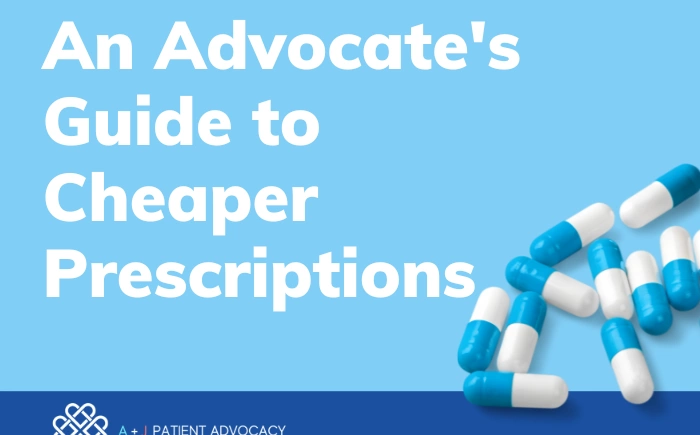An Advocate's Guide to Cheaper Prescriptions

Americans spend more on prescription medications than anyone else. Pharmaceutical companies spend incredible amounts of money on development, marketing, etc. By the time new drug is approved, it's us....the patients who end up paying the price. As a result, Americans spend an average of $1,300 per person per year on prescription drugs. [source: Bloomberg News]
But what can we do about it?
General Tips
- Don’t skip your prescription medication. Don’t reduce your dosage. Don’t share your prescription medication with anyone. Don’t skip filling a prescription.
- Get to know your pharmacist and pharmacy technicians! They hold a wealth of knowledge on your medications and the medication cost/payment system.
- You should always shop for your medications. Considering the yearly cost, prescription drugs should be considered a large purchase, for which research is needed to find the best deal.
Finding the Best Price for Your Medication
When approved by your physician, ask for the generic form of a drug, or if there is another medication for your condition that may cost less. Compare prices between your preferred pharmacies and consider mail-order prescriptions.
- Consider using online pharmacies like Cost Plus Drugs, Amazon, GeniusRX, or DiRX Health .
- Check to see if RXOutreach, a nonprofit pharmacy, provides your medication
- Find prescription coupons and discounts from GoodRX, SingleCare, NeedyMeds, ScriptSaver Well RX, Blink Health, ScriptHero, or Community Cares RX.
- Residents of Nevada, Oregon, and Washington are eligible for free ArrayRX discount cards.
- Search for discounts, coupons, or payment assistance programs from your drug’s manufacturer. The Medicine Assistance Tool and RXAssist are great places to start.
Prescription Savings Clubs
Many retail pharmacies, insurance providers, and even some employers, have Prescription Savings Clubs. These clubs are membership based and generally carry an annual fee. Members have access to certain drug categories at a flat rate (or free), with savings on many others.
- Walgreens Prescription Savings Club
- Walmart’s $4 RX Program
- Kroger Prescription Savings Club (covering most store chain pharmacies under the Kroger brand)
- Ask your employer benefits representative about employer-based programs.
- Ask your insurance company about policy-based programs.
Payment Assistance Funds
What happens if your medication does not qualify for discount programs, coupons, or other savings options? Or requires a specialty or compounding pharmacy? There are several organizations which provide prescription payment assistance, both before and after the prescription has been filled.
- Patient Advocate Foundation Co-Pay Relief Fund
- PAN Foundation Patient Financial Assistance
- National Organization for Rare Diseases Patient Assistance Programs
- HealthWell Foundation Disease Funds
- RX Hope
- Accessia Health Financial Assistance
- My Good Days Financial Support
- CancerCare Co-Payment Assistance Foundation
- FindHelp.org (enter your zip code, search for ‘prescription assistance’)
- 2-1-1.org (enter zip code, search for ‘prescription medication payment assistance’)
- Check national support organizations for your specific condition or diagnosis as many have financial assistance programs ( Leukemia & Lymphoma Society for example).
Still need help affording your medications? To find a health advocate skilled in financial assistance, visit gnanow.org and click «Search for Help Now.»
Originally published by A+J Patient Advocacy
